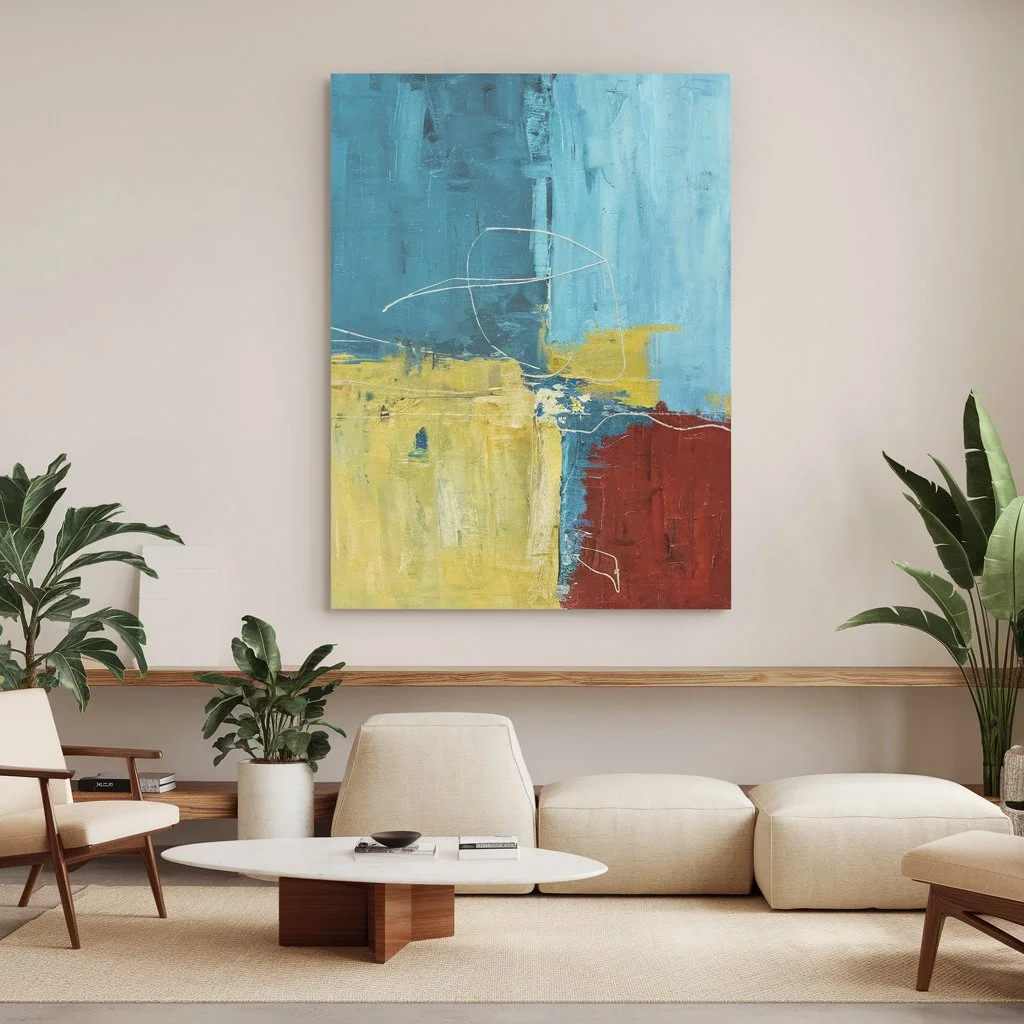Table of Contents
Wall art Modeling paste, sometimes referred to as texture paste, is a versatile and popular medium used by artists to add dimension, texture, wall Art, and depth to their artwork. This thick, white paste can be applied to a variety of surfaces and works particularly well with acrylic paints. Whether you want to create a rough texture, sculpt raised areas, or add intricate details, modeling paste offers endless possibilities for experimentation.
In this guide, we’ll cover the basics of how to use Wall art Modeling , including application techniques, materials, and creative ideas to help you get started.

What is Modeling Paste wall art?
Wall art Modeling paste is a thick, heavy medium made from a combination of acrylic polymer emulsion and marble dust or other fillers wall art. It has a putty-like consistency and can be used to create raised surfaces or textures on your canvas. Once it dries, it forms a hard, durable surface that can be painted over or further manipulated.
Wall art Modeling is most commonly used with acrylic paints, but it can also be used on its own to build textured surfaces or sculptural elements.
Materials You’ll Need
Before using modeling paste, make sure you have the following materials ready:
- Modeling Paste: Available at most art supply stores, modeling paste comes in different consistencies (light, regular, or heavy). Choose one based on the texture you want to achieve.
- Canvas or Board: A sturdy surface, such as canvas, wood panels, or thick paper, is best for holding the weight of the paste.
- Palette Knife or Spatula: For applying and shaping the modeling paste.
- Acrylic Paints: To paint over the modeling paste once it has dried.
- Brushes: Various sizes for applying paint or for adding fine details.
- Water and Rags: For cleaning your tools and hands.
- Texturing Tools: Items such as combs, sponges, or stamps can be used to create unique textures on the paste.
How to Use Modeling Paste in wall Art: Step-by-Step Guide
1. Prepare Your Surface
Before applying Wall art Modeling prepare your canvas wall art, board, or surface. If you’re using a Wall art Modeling, make sure it’s stretched tightly and primed. A primed surface will help the modeling paste adhere better. You can also apply a base layer of acrylic paint if you want a colored background to show through the texture.
2. Apply the Modeling Paste
Using a palette knife or spatula, scoop a generous amount of modeling paste and spread it onto your surface. You can apply the paste in different ways depending on the texture you want to achieve:
- Smooth Surface: Spread the modeling paste evenly across the surface for a smooth, flat texture.
- Thick, Sculpted Areas: Apply a thicker layer of paste and sculpt it into peaks, ridges, or other raised shapes.
- Textured Surface: Use various tools like sponges, combs, or even household items (forks, stamps, etc.) to press into the wet paste and create patterns or textures.
Feel free to experiment with different tools to create unique textures. For instance, you can use a palette knife to create abstract shapes or a sponge to add a porous texture. The paste will retain whatever texture or shape you imprint on it while it’s still wet.
3. Let the Paste Dry
Once you’ve finished applying the modeling paste wall art, allow it to dry completely before moving on to the next step. Drying time will vary depending on the thickness of the paste and the room’s humidity, but it typically takes a few hours to overnight.
During the drying process, the paste may shrink slightly, so keep this in mind when applying it in thick layers. If you’re in a hurry, you can speed up the drying process using a fan or a hairdryer on a low setting.
4. Paint Over the Modeling Paste
Once the modeling paste wall Art has dried completely, you can start painting over it using acrylic paints. Acrylics work best because they adhere well to the dried paste and dry quickly. Here are some painting techniques you can try:
- Dry Brush: Use a dry brush to apply paint lightly over the raised areas, highlighting the texture while allowing the base layer to show through.
- Wash: Dilute the acrylic paint with water and apply it as a wash over the textured surface. The paint will settle into the crevices, adding depth and dimension.
- Bold Colors: Apply thick layers of acrylic paint to create vibrant, bold artwork that emphasizes the raised texture.
You can also mix acrylic paint directly into the modeling paste before applying it to the canvas if you want to add color to the texture itself.
Creative Ideas for Using Modeling Paste
Here are some creative ideas and techniques for incorporating modeling paste into your wall art:
1. Abstract Texture

Use modeling paste to create abstract textures on your wall Art. Apply the paste thickly and use your palette knife to create dynamic patterns, swirls, or ridges. Once dry, you can paint over it with a variety of colors, allowing the texture to catch light and add visual interest.
2. Nature-Inspired Textures wall art

Create textured landscapes or nature-inspired art by using modeling paste to mimic elements like tree bark, rocks, or waves. For example, you can apply the paste in rough, vertical strokes to simulate tree bark, or use circular motions to mimic the texture of waves on the ocean.
3. Stenciling with Modeling Paste
Stencils can be used with modeling paste to create raised, intricate patterns. Place a stencil over your surface, apply the paste on top, and then carefully remove the stencil to reveal a raised design. This technique works well for creating decorative motifs or textured backgrounds.
4. Sculptural Elements
If you want to add more dimension to your artwork, you can use modeling paste to create three-dimensional sculptural elements. Apply the paste thickly and shape it using your palette knife or fingers. This is great for creating realistic textures like leaves, flowers, or even abstract shapes that stand out from the canvas.
Tips for Working with Modeling Paste
- Work in Layers: If you want to build up very thick textures, it’s better to work in layers wall Art.. Apply one layer of paste, let it dry, and then add more on top. This will prevent cracking or uneven drying.
- Seal Your Work: After painting over the modeling paste, consider sealing your work with a varnish or protective coating. This helps preserve the texture and prevents the paint from chipping.
- Mix with Mediums: You can mix modeling paste with other acrylic mediums to change its consistency. For example, adding a gloss medium will give the paste a shiny finish.
- Clean Tools Quickly: Modeling paste dries hard, so be sure to clean your palette knife, brushes, and tools with water immediately after use.
Wall art Modeling,Wall art Modeling,Wall art Modeling,Wall art Modeling,Wall art Modeling,Wall art Modeling.
Conclusion
Modeling paste wall Art is an incredibly versatile medium that opens up a world of creative possibilities in your artwork. Whether you’re aiming for subtle texture or bold, sculptural effects, this paste allows you to add depth and dimension to your paintings. By experimenting with different techniques, tools, and materials, you can create unique pieces that stand out and engage the viewer.
Now that you know the basics, it’s time to start experimenting with modeling paste in your own art projects. Let your imagination guide you, and enjoy the process of adding texture and dimension to your creative works!
